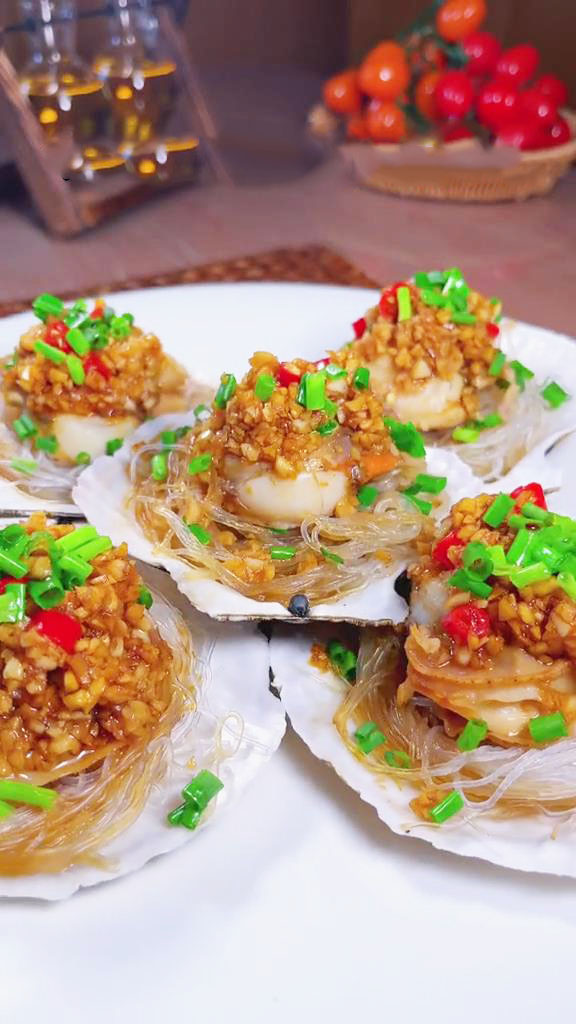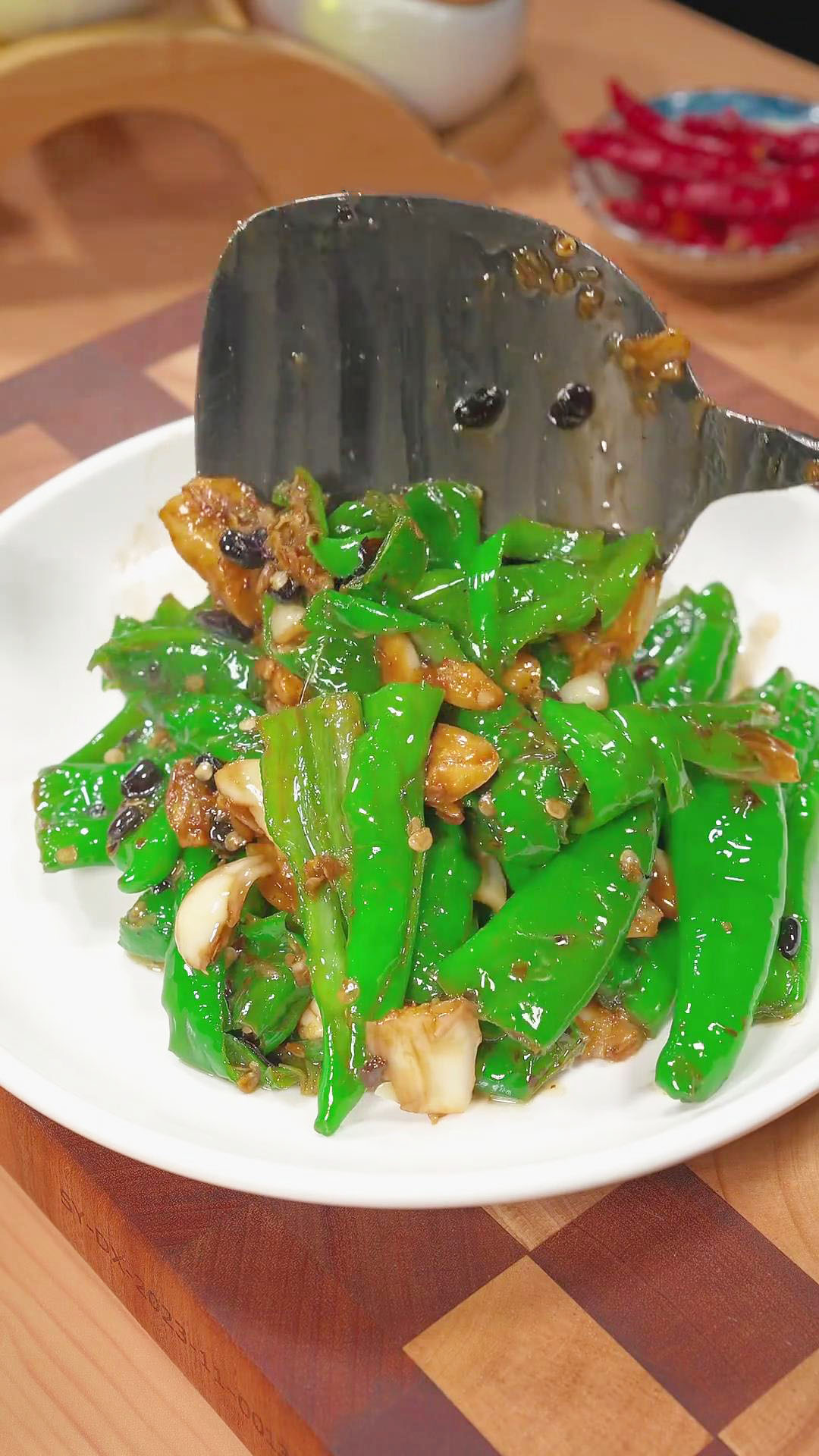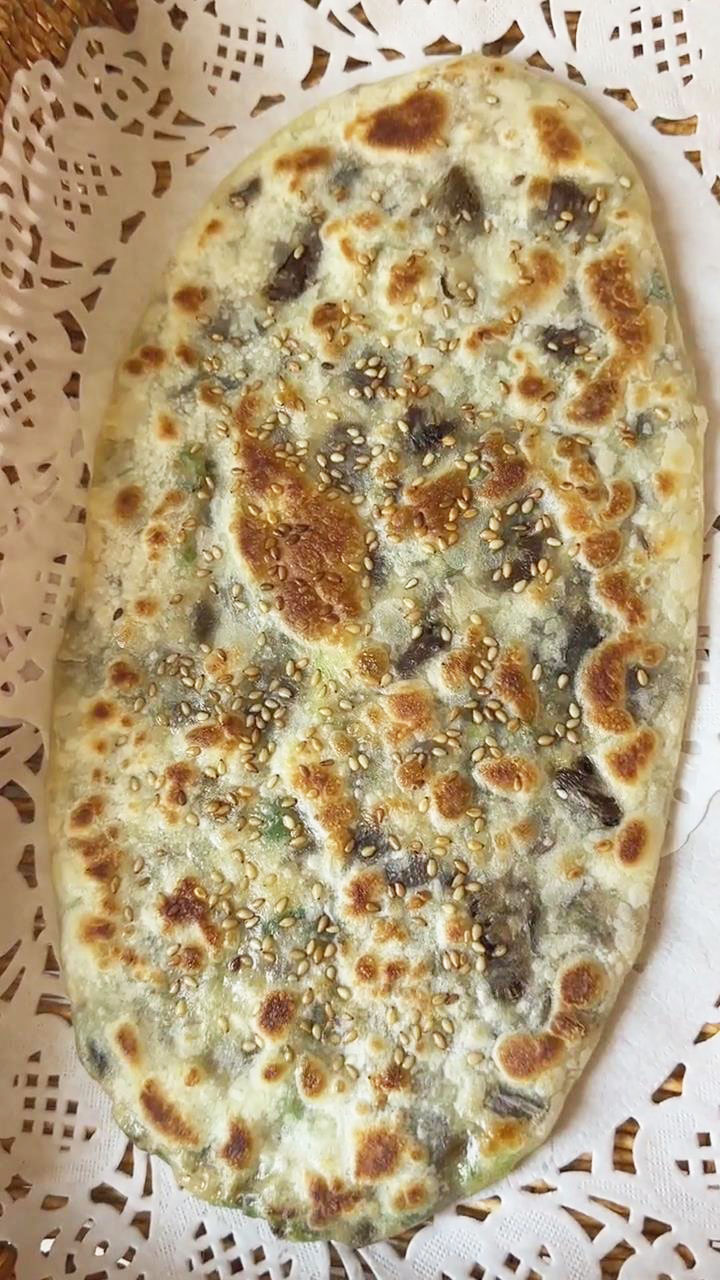Experience traditional Sichuan cuisine by cooking dishes with my restaurant-style Yu Xiang Sauce. It‘s sweet, tangy, umami, and spicy that goes with vegetable and meat dishes. Read on to learn how to make this from scratch and how to use it for your next meals.
What Is Yu Xiang Sauce?
In translation, yu xiang means fish-fragrant. Despite its name, it actually does not contain any fish ingredients. There are several varieties of yu xiang depending on the ingredients used, but the most common ingredients are soy sauce, vinegar, sugar, cooking wine, soybean paste, and pickled chili peppers.
Aromatics, such as chopped green onions, ginger, and garlic, are also added for fragrance and flavor. For this version, I made it extra fragrant with a drizzle of red chili oil. As a result, you’ll enjoy its harmonious contrasting flavors.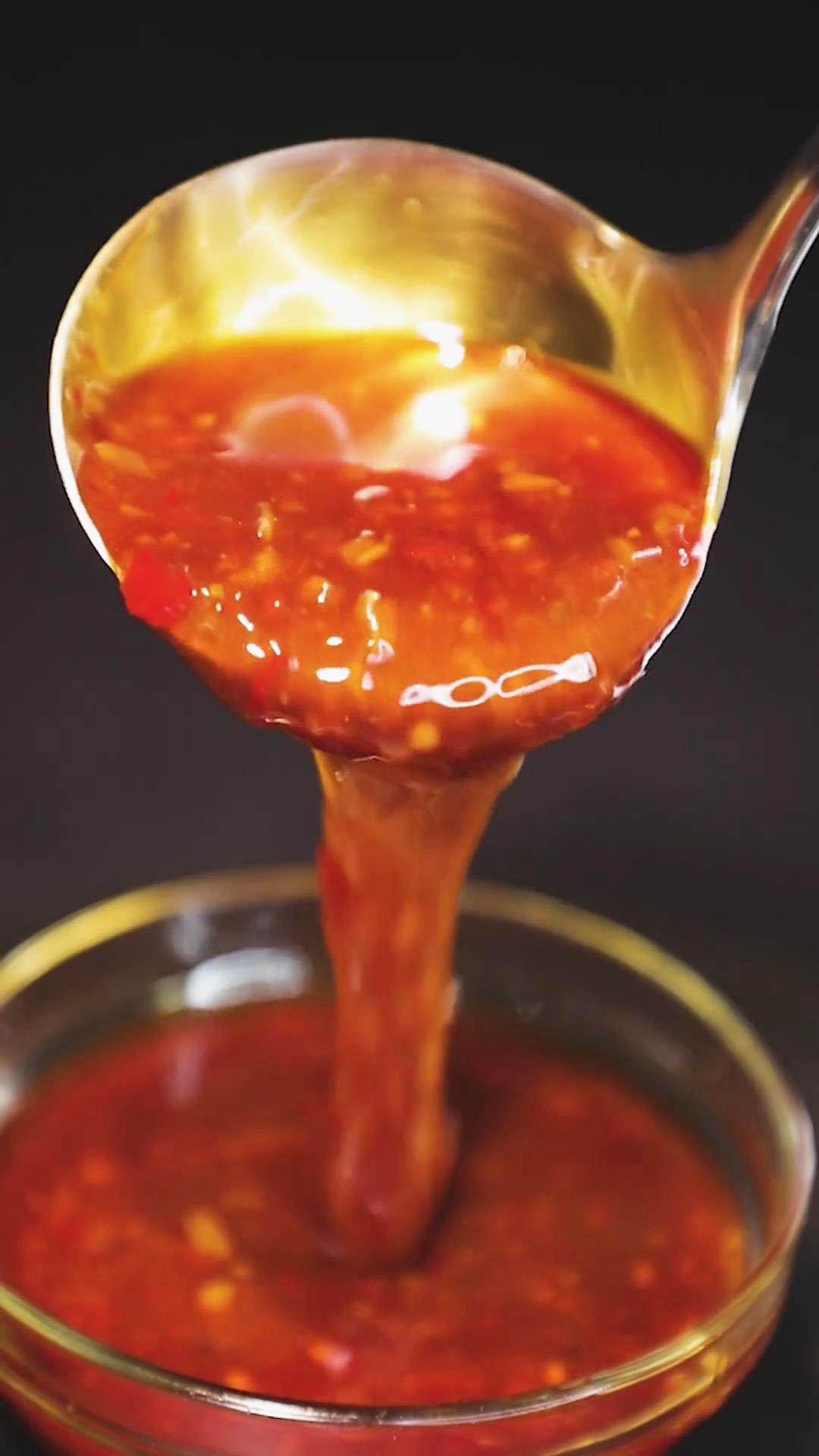
With its well-balanced flavor, it goes with any vegetable or meat dish. Use it as a stir-frying sauce for various meals, such as eggplant, pork, beef, chicken, and fish. It also works as a dipping sauce and as a main ingredient for fried rice recipes.
It is sweet, spicy, savory, and sour. Plus, it gets its sticky and creamy consistency with the additional cornstarch slurry. If you love making your own sauces, toppings, or condiments, try these recipes as well:
- Chinese Five Spice Powder
- Salt And Pepper Seasoning Using 6 Spices
- Chinese Black Bean Sauce
- Fermented Black Beans
- Fried Shallots In Oil
- Crispy Fried Garlic
- Thai Roasted Chili Paste
- Sweet Soy Sauce
- Soy Sauce Vinegar Recipe (Dumpling Sauce)
- 6 Hot Pot Dipping Sauces
How To Customize The Ingredients
The main sauce is a mix of white sugar, rice vinegar, cooking wine, light soy sauce, white pepper powder, salt, green onions, ginger, garlic, and cornstarch slurry. Here are my recommendations for each:
- White sugar: Sugar will make the sauce sweet and balance out the saltiness and spiciness. White granulated sugar is suggested for best results.
- Rice vinegar: Add equal amounts of vinegar as sugar to give a well-balanced tangy taste. I recommend using Chinese black vinegar for a traditional fruity, tangy, and slightly sweet taste. This is available in Asian stores or in the international section of local grocery stores. It is often called Chinkiang vinegar or Zhenjiang vinegar. Alternatively, you can use other types of vinegar with varying tastes, such as regular rice vinegar, white vinegar, apple cider, balsamic vinegar, date vinegar, or red wine vinegar.
- Cooking wine: Adds a slightly sweet and briny flavor. I recommend Shaoxing rice wine, but you can use alcohol-free wine as an alternative. If cooking wine is unavailable, substitutes include sake, sherry, stock or broth, or red wine vinegar.
- Light soy sauce:Light soy sauce adds body to the sauce by making it savory and umami. You can also use tamari, liquid aminos, coconut aminos, or gluten-free soy sauce.
- White pepper powder: White pepper provides an earthy taste and subtle heat. You can swap this with black pepper, but the taste will be woody, piney, and hot.
- Salt: Salt brings out the different flavors of the ingredients. Use any type of salt, such as sea salt, pink salt, and kosher salt, and adjust to taste.
- Green onions (white part): Use the white parts of chopped green onions. This adds a mild sweet, oniony taste to the sauce. If you don’t have green onions, you can substitute this ingredient with chives, shallots, white onions, yellow onions, or red onions.
- Ginger: Ginger adds a unique spicy, warm taste with hints of citrus. You can swap fresh ginger with ground ginger. Use 1/4 to 1/2 tsp ground ginger for every 1 tbsp of fresh ginger.
- Garlic: A garlic-infused sauce is always better with its nutty, earthy, and pungent taste. If you don’t have garlic but want the garlicky flavors, you can substitute 1 clove of garlic with 1/8 tsp of garlic powder or 1/4 tsp of granulated garlic. You can also use pre-cooked crispy fried garlic if you have it on hand.
- Cornstarch slurry: Cornstarch is needed to make the sauce sticky, thick, and creamy. The cornstarch slurry is a mix of 1 tbsp of cornstarch and 2 tbsp of water (1:2 ratio). If you don’t have cornstarch, you can substitute 1 tbsp of cornstarch with 2 tbsp of tapioca flour or 1 tbsp of potato starch.
For the stir-frying step, I cooked down doubanjiang, pickled chili pepper, green onions, ginger, and garlic on low heat. Then, I mixed in the prepared sauce and a drizzle of red chili oil.
- Doubanjiang: You may know doubanjiang as sweet soybean paste or broad bean paste. It is sweet, nutty, funky, and spicy and made from fermented soybeans. The closest alternatives to sweet soybean paste are miso paste and hoisin. However, the taste will be slightly different.
- Pickled chili peppers: Pickled chili peppers add that oomph to the sauce, so I highly recommend not skipping this. It has an irresistible fresh, spicy, and sweet taste. If you can’t find this in the store, you can make your own from scratch or swap it with fermented chili paste or more doubanjiang.
- Aromatics: For an in-depth flavor, I added more chopped green onions (white part), ginger, and garlic during the stir-frying step.
- Chili oil: I love chili oil for its bright, deep, and smoky taste. You can buy this in grocery stores packed in glass jars or online like Amazon. If you have time, I recommend making your own fresh, homemade chili oil with my chili oil recipe. I also have a shorter version of chili oil in my Szechuan dumpling recipe using only 3 ingredients: chili flakes, white sesame seeds, and hot oil. You can swap chili oil with other similar alternatives, such as pepper sauce, sriracha sauce, hot sauce, chili flakes, and chili garlic sauce.
What To Prepare: Ingredients And Kitchenware
Prepare your mixing bowl, pan, and a sauce glass jar with a seal. I recommend using a glass container to store the sauce since it is impermeable and non-porous. As a result, it preserves the flavor and aroma better than plastic containers.
The ingredients you need are:
Sauce:
- 40 grams of white sugar
- 40 grams of rice vinegar
- 15 grams of cooking wine
- 25 grams of light soy sauce
- A dash of white pepper (to taste)
- 1/2 tsp of salt
- 1 tbsp of chopped green onions (white part)
- 1 tbsp of minced ginger
- 1 tbsp of minced garlic
- 1 tbsp of cornstarch slurry
Stir-frying:
- 2 tbsp of oil
- 1 tsp of doubanjiang
- 1 tsp of pickled chili peppers
- 1 tbsp of chopped green onions (white part)
- 1 tbsp of minced ginger
- 1 tbsp of minced garlic
- A drizzle of red chili oil
Steps To Make Yu Xiang Sauce
Chop your ingredients and mix everything together–it’s that simple! You can finish the recipe in less than 10 minutes. Learn how I did it by watching my Instagram or TikTok tutorial video.
Finished making yu xiang sauce? How did you use it for your recipes? Share what you made by commenting in the comments section and tagging me @kitchenmisadventures.
To make authentic Yu Xiang Sauce at home, follow these steps:
- Chop your fresh ingredients, such as green onions, garlic, and ginger.
- In a bowl, mix white sugar, rice vinegar, cooking wine, light soy sauce, white pepper to taste, and salt. Adjust the taste according to your liking.
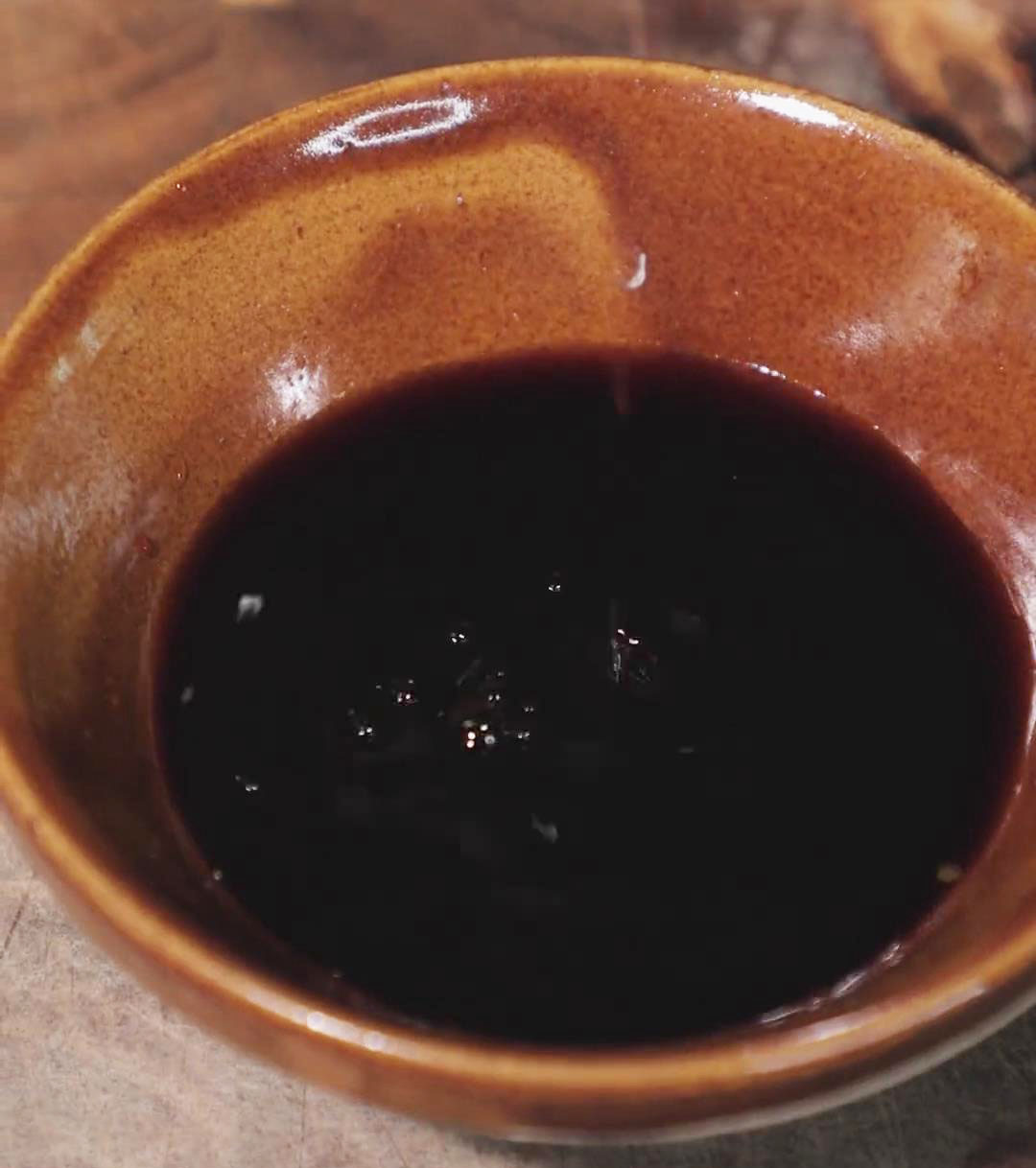
- Then, add chopped green onions, minced ginger, and garlic.
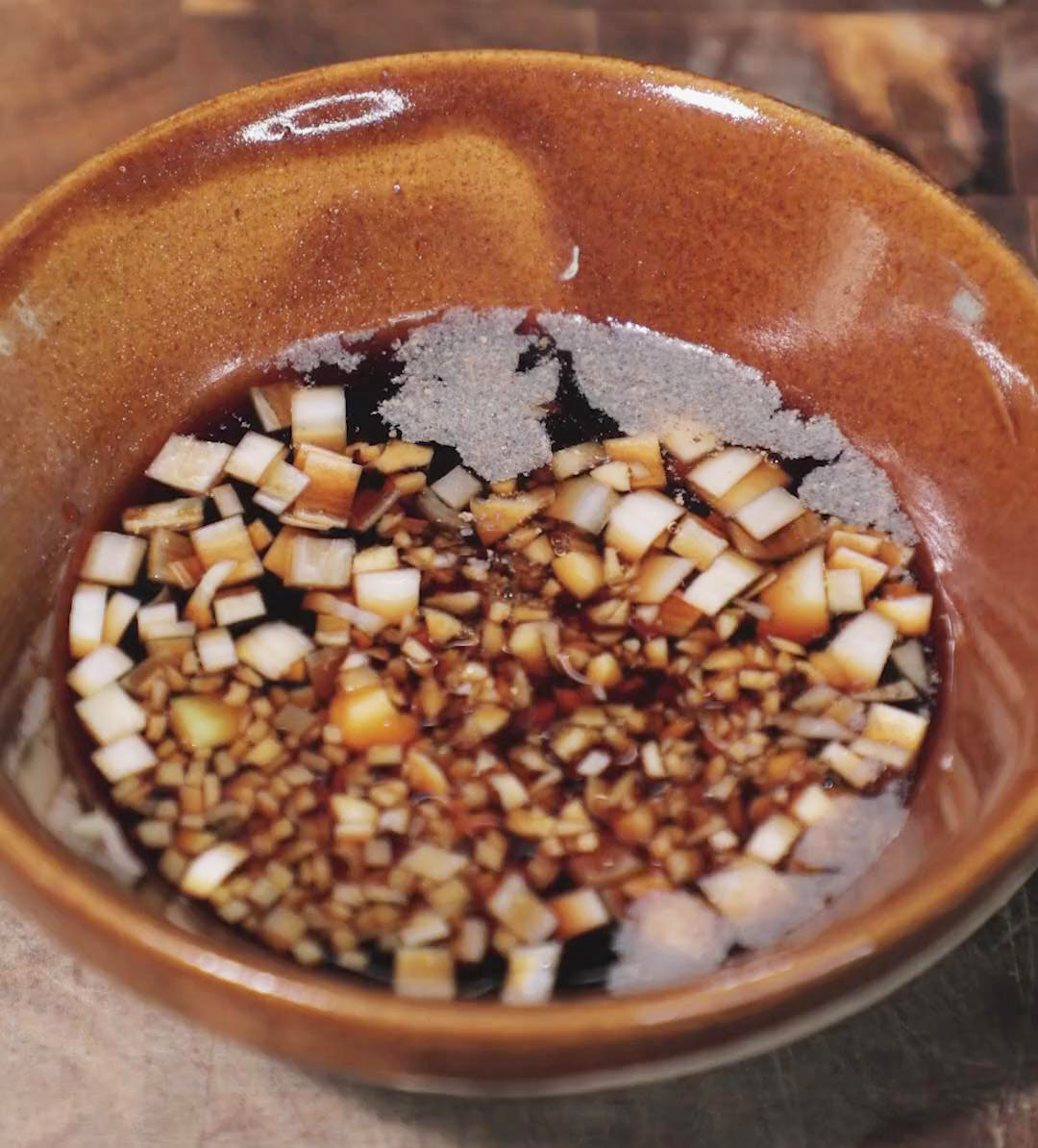
- Finally, stir in the cornstarch slurry until the sauce is well combined. Set aside. To make the cornstarch slurry, mix 1 tbsp of cornstarch and 2 tbsp of water (1:2 ratio).

- Next, heat oil in a pan and add doubanjiang and pickled chili peppers. Heat and stir over low heat until fragrant.
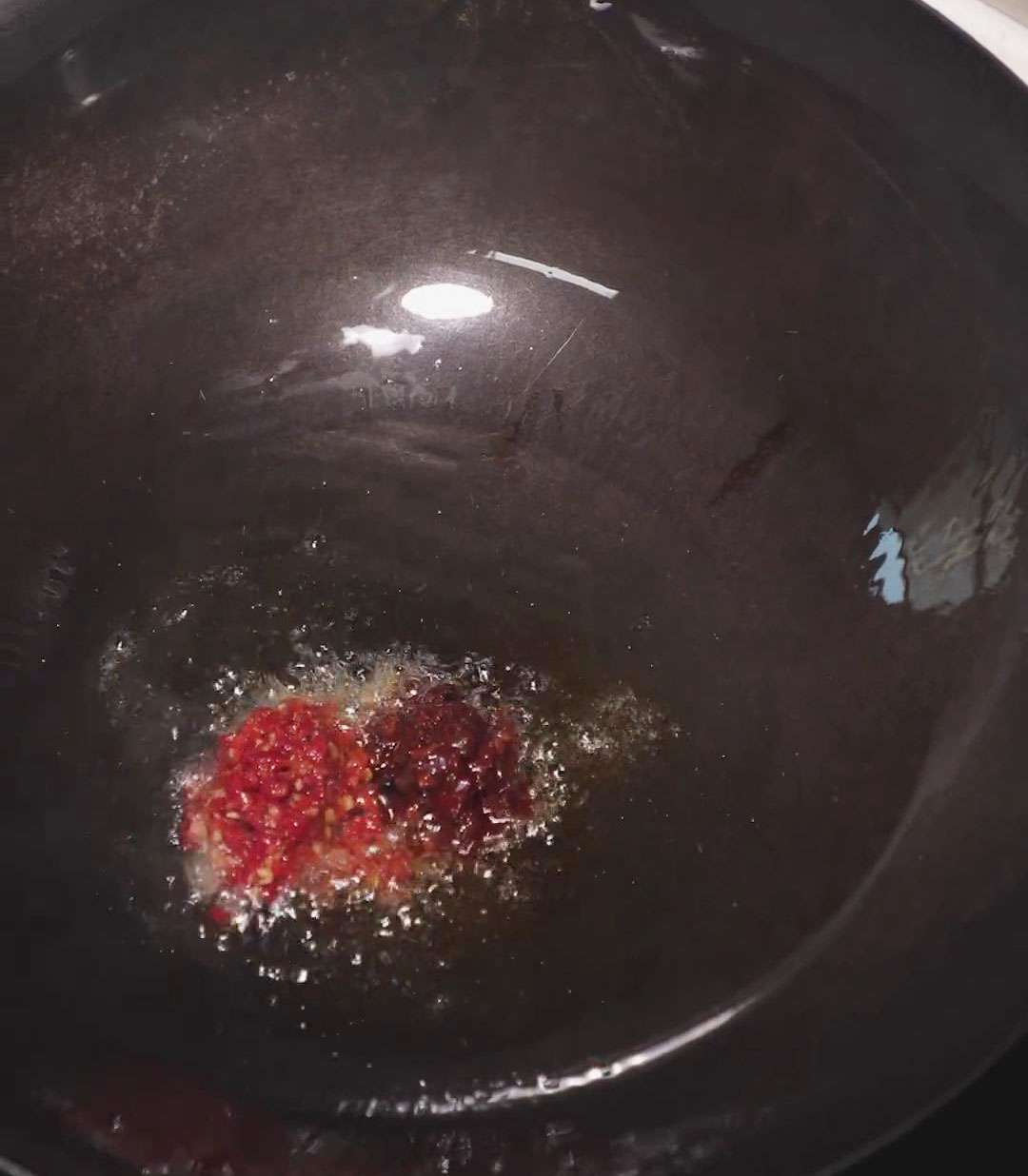
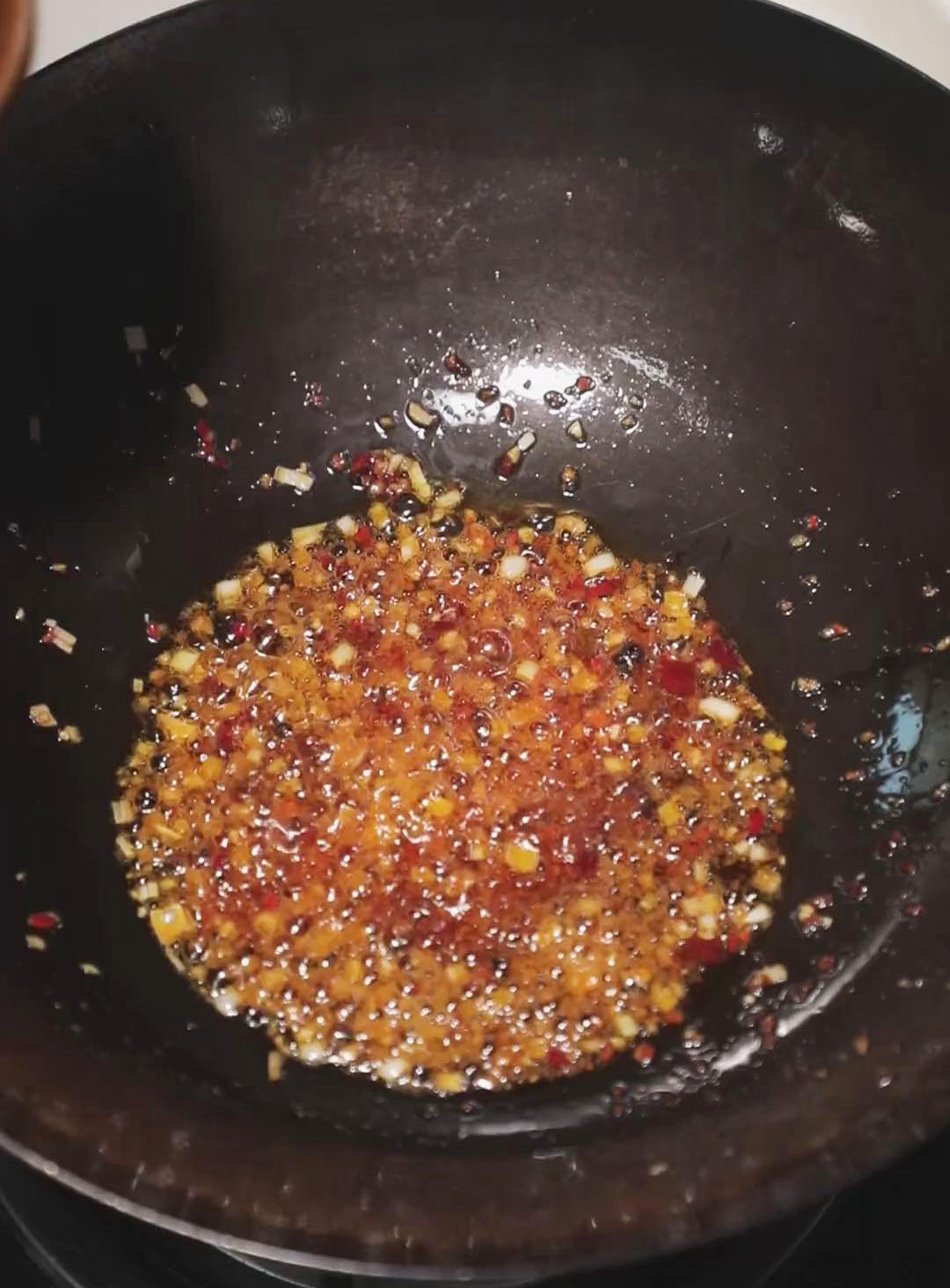
- Once aromatic, add chopped green onions, ginger, and garlic. Continue cooking until all ingredients are lightly cooked.
- Now, mix the prepared sauce once more and pour it into the pan. Cook until the flavors meld together.It is important to mix the sauce again before adding it to the pan since the cornstarch tends to settle at the bottom and may separate as you pour the sauce.
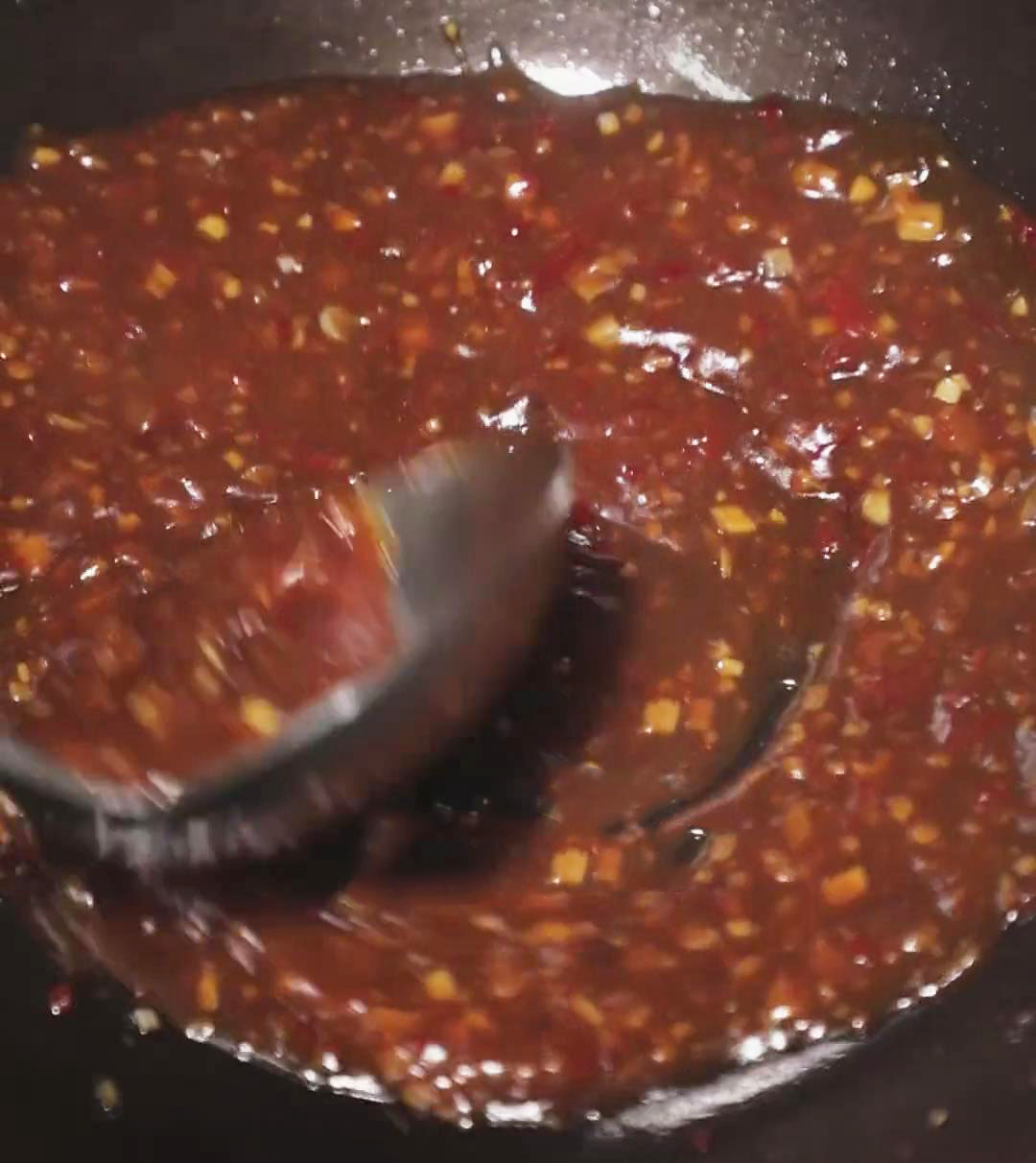
- Finish the sauce by drizzling red chili oil to enhance both color and fragrance. Mix well. Transfer the sauce to an airtight glass jar container and store it in the refrigerator to last longer.
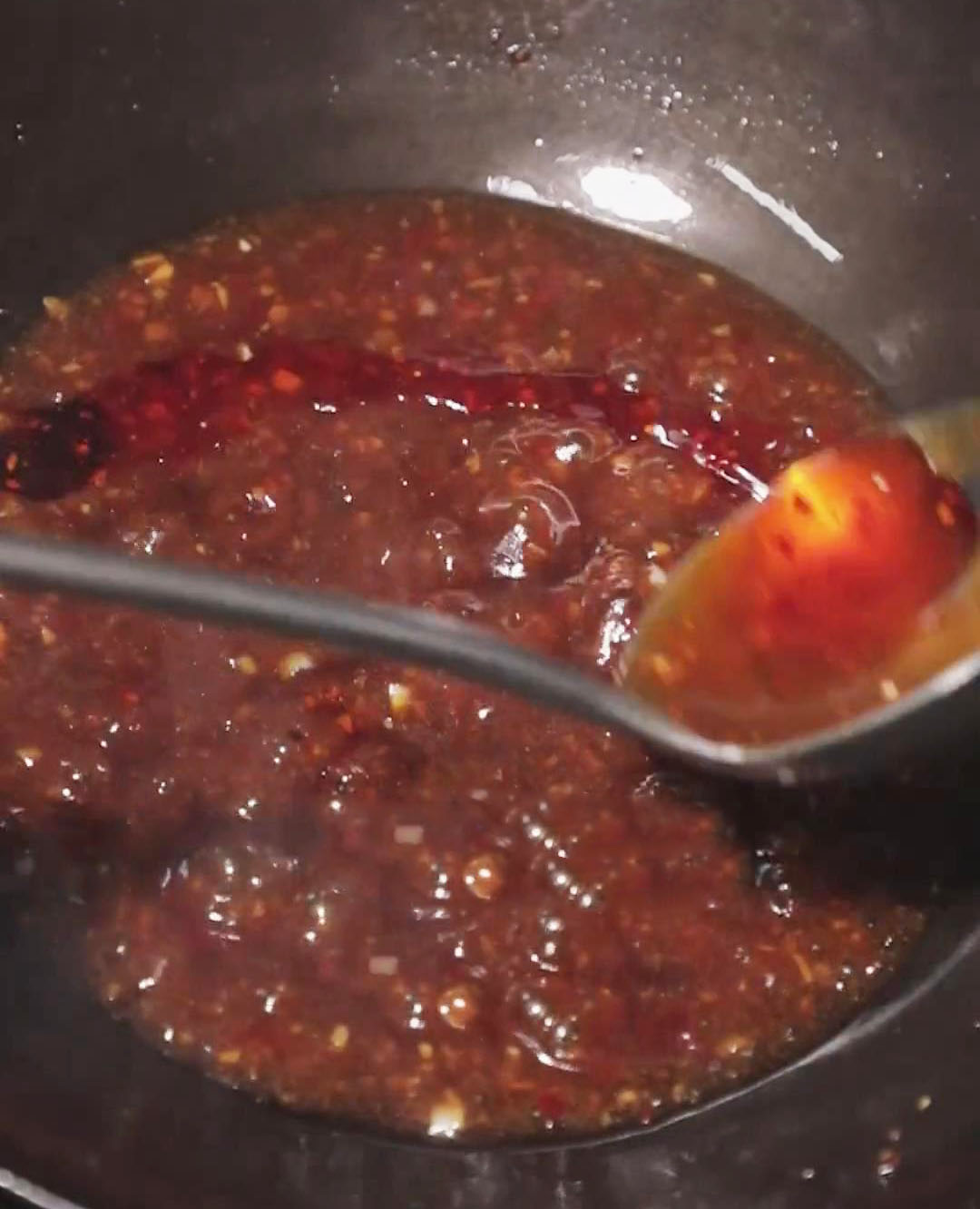
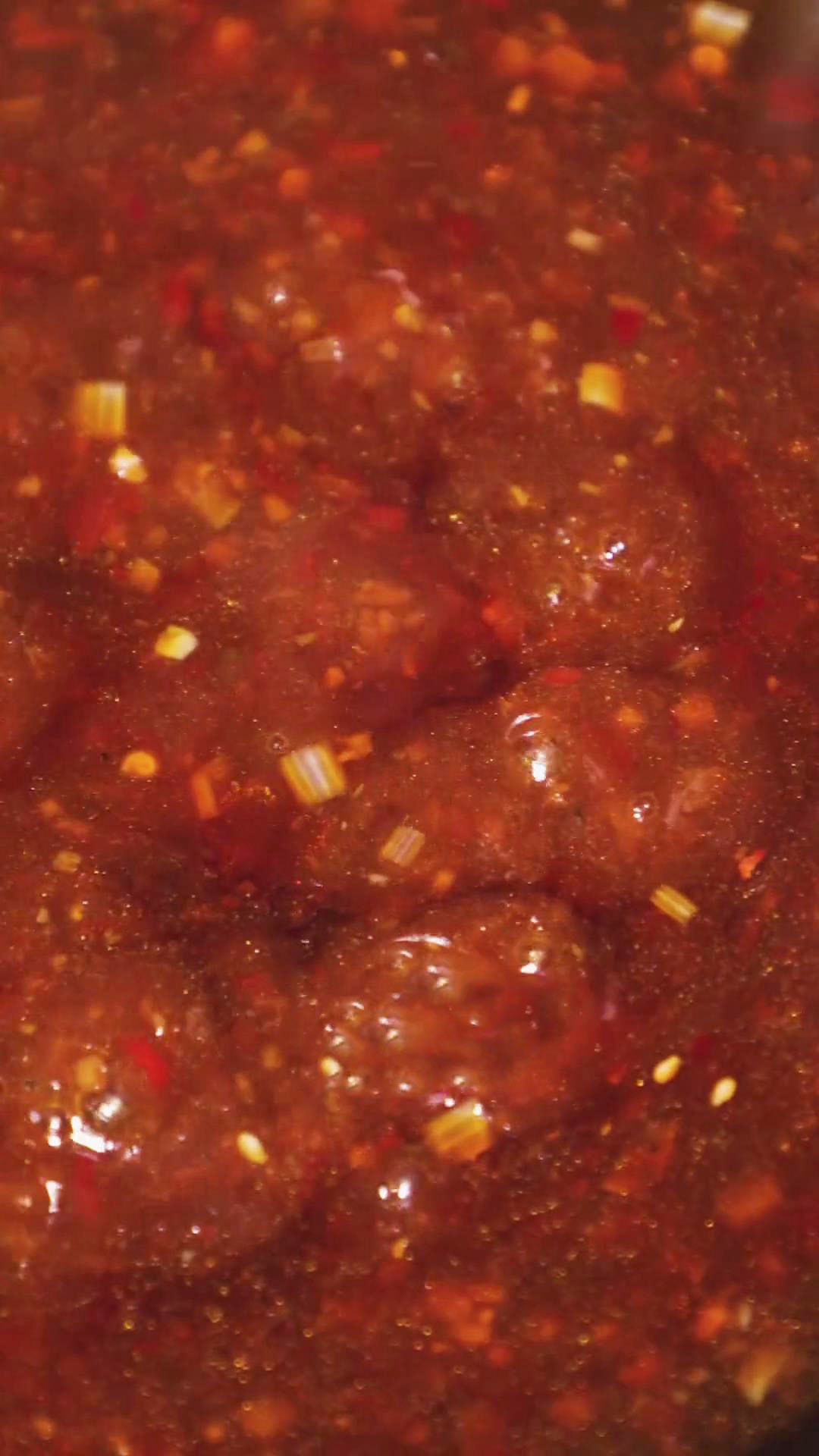
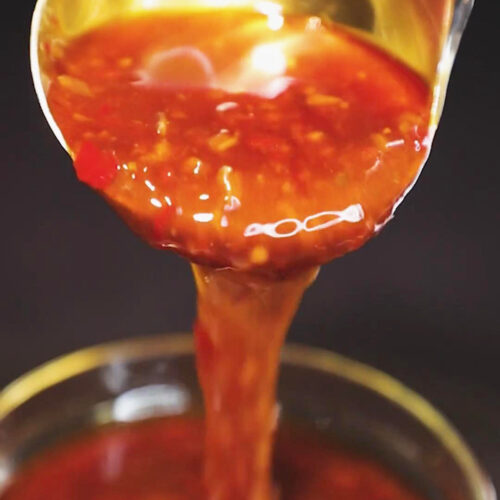
Restaurant-Style Chinese Yu Xiang Sauce
Experience traditional Sichuan cuisine by cooking dishes with my restaurant-style Yu Xiang Sauce. It's sweet, tangy, umami, and spicy that goes with vegetable and meat dishes. Read on to learn how to make this from scratch and how to use it for your next meals.Ingredients
Sauce:
- 40 grams of white sugar
- 40 grams of rice vinegar
- 15 grams of cooking wine
- 25 grams of light soy sauce
- A dash of white pepper to taste
- 1/2 tsp of salt
- 1 tbsp of chopped green onions white part
- 1 tbsp of minced ginger
- 1 tbsp of minced garlic
- 1 tbsp of cornstarch slurry
Stir-frying:
- 2 tbsp of oil
- 1 tsp of doubanjiang
- 1 tsp of pickled chili peppers
- 1 tbsp of chopped green onions white part
- 1 tbsp of minced ginger
- 1 tbsp of minced garlic
- A drizzle of red chili oil
Instructions
- Chop your fresh ingredients, such as green onions, garlic, and ginger.
- In a bowl, mix white sugar, rice vinegar, cooking wine, light soy sauce, white pepper to taste, and salt. Adjust the taste according to your liking.
- Then, add chopped green onions, minced ginger, and garlic.
- Finally, stir in the cornstarch slurry until the sauce is well combined. Set aside.To make the cornstarch slurry, mix 1 tbsp of cornstarch and 2 tbsp of water (1:2 ratio).
- Next, heat oil in a pan and add doubanjiang and pickled chili peppers. Heat and stir over low heat until fragrant.
- Once aromatic, add chopped green onions, ginger, and garlic. Continue cooking until all ingredients are lightly cooked.
- Now, mix the prepared sauce once more and pour it into the pan. Cook until the flavors meld together.It is important to mix the sauce again before adding it to the pan since the cornstarch tends to settle at the bottom and may separate as you pour the sauce.
- Finish the sauce by drizzling red chili oil to enhance both color and fragrance. Mix well. Transfer the sauce to an airtight glass jar container and store it in the refrigerator to last longer.
Nutrition
Calories: 483kcalCarbohydrates: 51gProtein: 4gFat: 28gSaturated Fat: 2gPolyunsaturated Fat: 8gMonounsaturated Fat: 18gTrans Fat: 0.1gSodium: 2567mgPotassium: 214mgFiber: 1gSugar: 41gVitamin A: 121IUVitamin C: 8mgCalcium: 49mgIron: 1mgTried this recipe?Let us know how it was!

